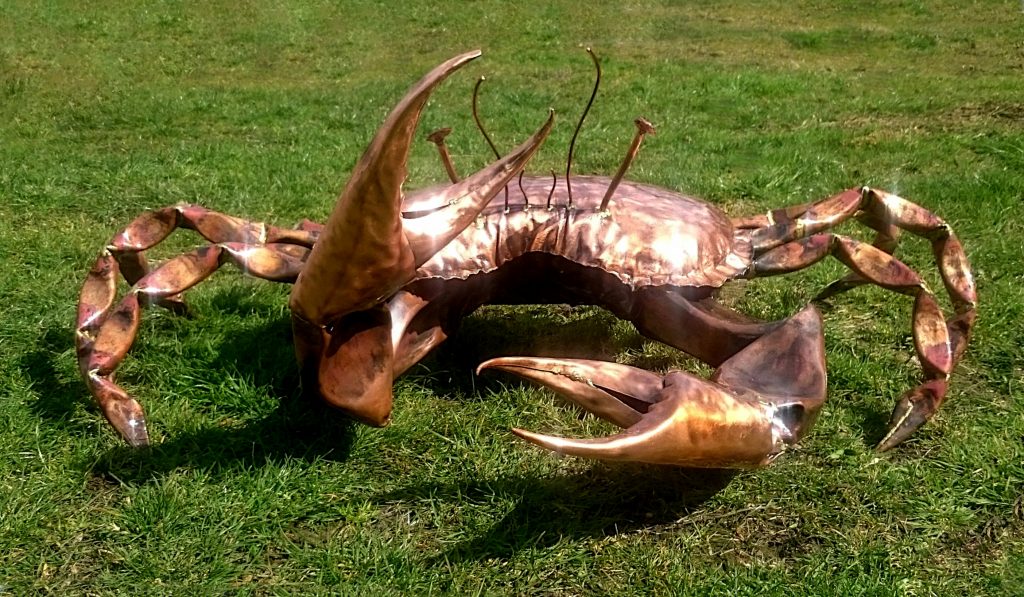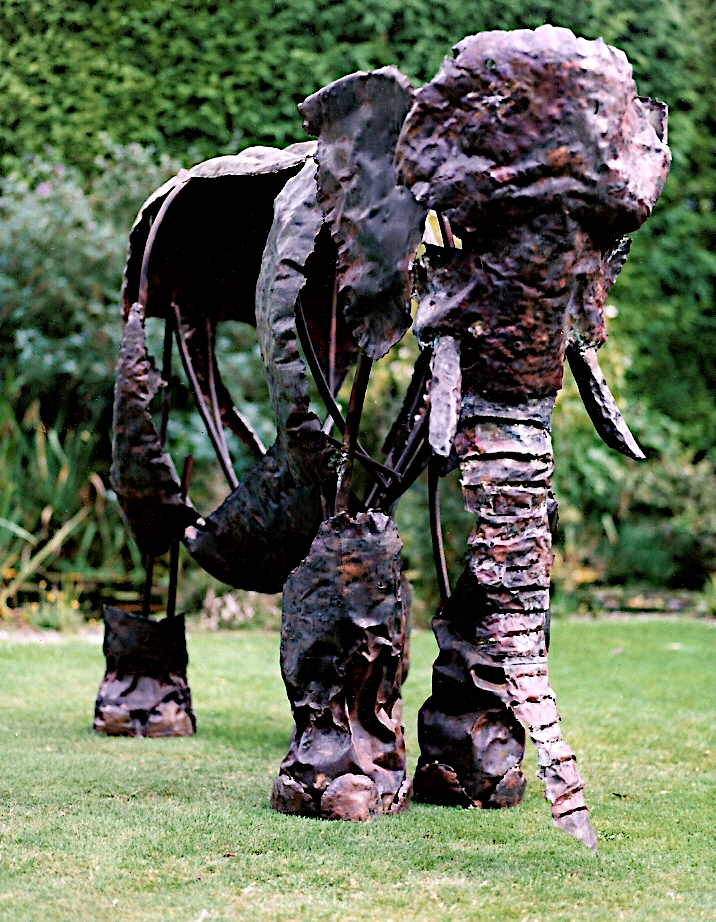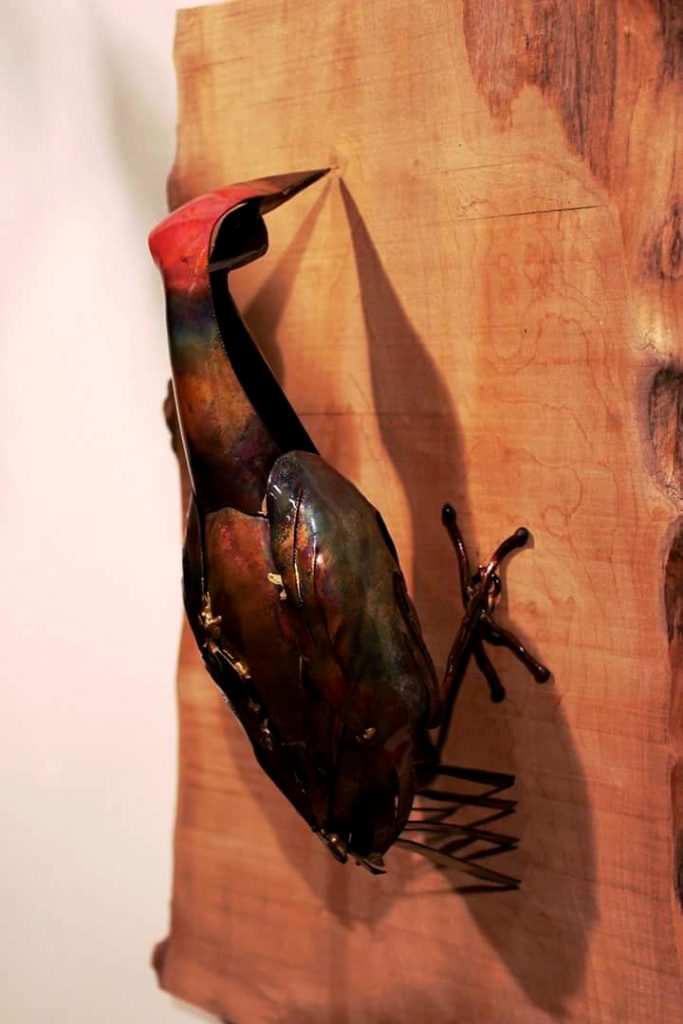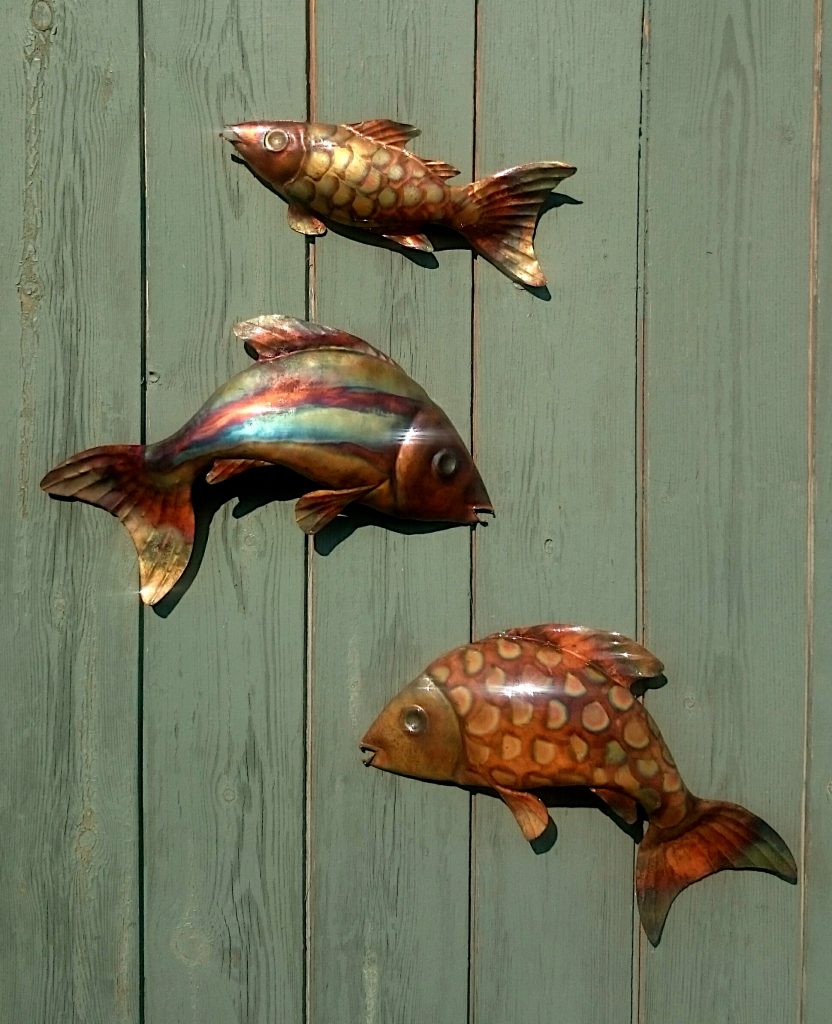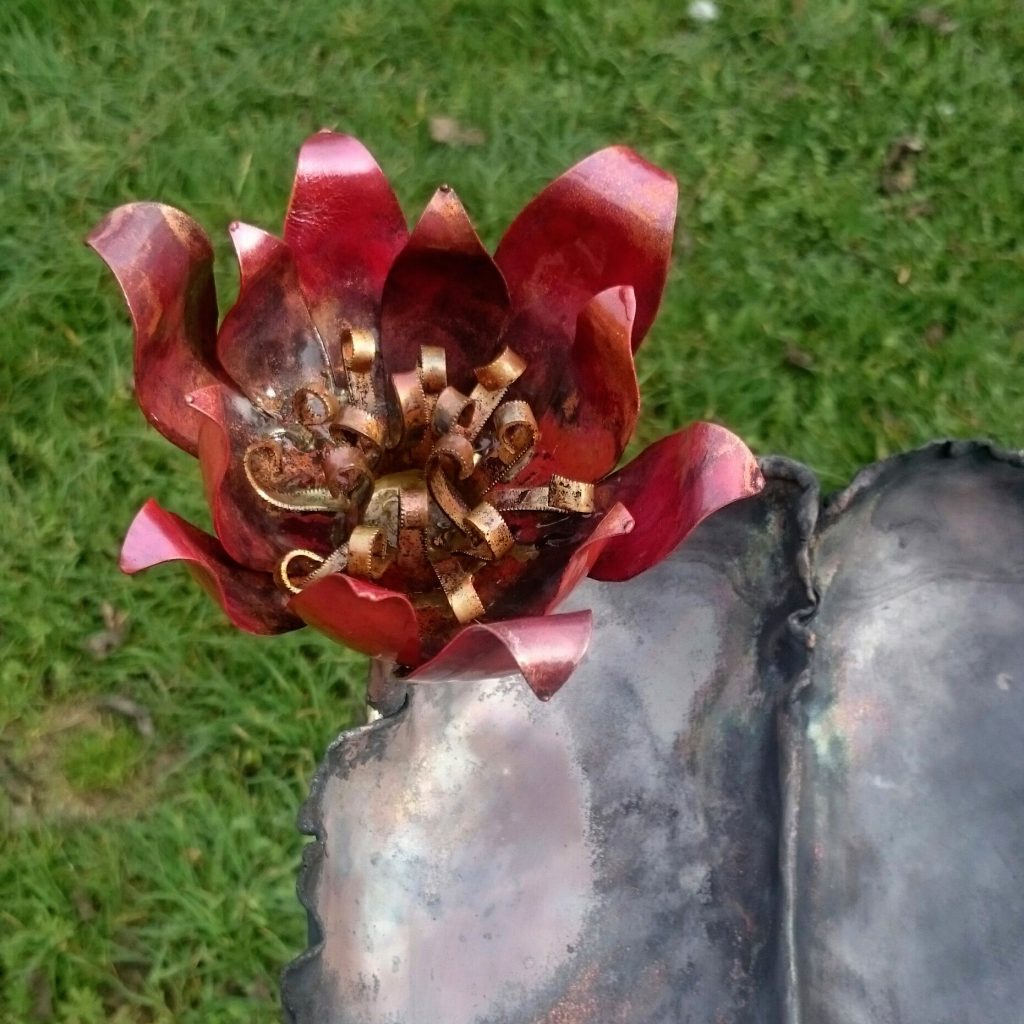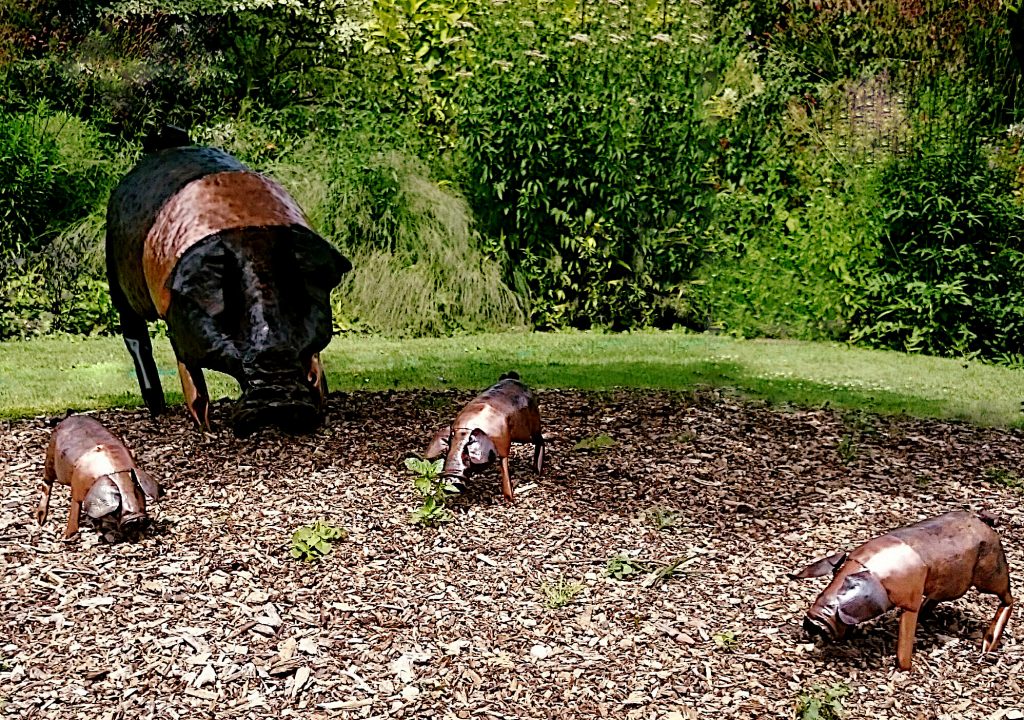Answers to common questions may be found here. If not, please give me a call or send an email.
All my sculptures may be placed indoors or out, all the year round. Copper does not rust. You should, however, ensure they are secure and cannot be damaged by high winds or by impacts from moving vehicles like lawn-mowers, bicycles or cars.
These sculptures are not toys – please avoid having children sit or climb on them, because they may hurt themselves and will almost certainly damage the sculpture. The parts which look sharp or pointed ARE sharp and pointed, and you should place them where people will not walk or fall into them. This applies especially with large works, like the antlers of the stag and the claws of the giant crab.
Where colour has been used in a sculpture, this is created by heating and quenching the copper at different temperatures. There are no dyes, paints or additives used. The only chemical sometimes applied is where we wish to accelerate the normal verdigris green process seen on old copper.
Fresh clean copper is a bright salmon-pink colour. As copper ages, it will darken through a rich brown to purple-black, and eventually will acquire a verdigris bright turquoise, especially if near water. This change may take many years. The colour-change is a natural consequence of exposure to the air and the elements, and does not damage the strength of the metal. I use it to enhance the character of the sculpture, and unlacquered pieces will look better and better as they mature and their colour deepens.
The use of clear lacquer
Where we wish to prevent the natural ageing colour-change, it is simply necessary to prevent oxygen in the air getting to the copper. Where the copper has been coloured by heating, or the bright pink of fresh copper has been used as in the saddleback pig or the rabbit’s ears and tail, the piece is lacquered, sealing it away from the air. Provided the sculpture is not bent or scratched the lacquer appears to last indefinitely – I have seen pieces which have remained unchanged for fifteen years or more. After extensive experimentation I have found that Halford’s Universal Clear Lacquer is best – but not the Heavy Duty one, which has a different solvent base. You should not need to apply any additional lacquer; please contact me if in doubt.
If your sculpture should suffer damage, I shall be happy to do what I can to restore it as far as possible – please contact me. It is usually possible to re-shape or re-colour a piece, depending on the nature and extent of the damage. Beware of gardeners with lawn-mowers and other tools, and children with footballs, which are the most common sources of damage.
Take care if it becomes necessary to move a sculpture. Some are much heavier than they look, and can be awkward to lift – do not injure yourself. There are places where they can safely be lifted, and other parts which may bend and might be damaged – it is largely a matter of common sense. If in doubt, especially with larger pieces, please contact me.
How do I work, and where do the ideas come from?
Mother Nature provides a constantly-changing and inexhaustible supply of ideas. I do occasionally accept commissions to create something I’ve never thought of before, but most of what I think of as my best work comes from sightings in nature (like the lambs) or from flashes of inspiration – “Ooh – I wonder if…” There are many dreams I shall, I hope, visit one day: grasshopper, goat… RHINOCEROS.
Where possible, I work from direct observation, photographing and sketching, and from there directly to bashing a piece of copper to see how it comes out. If I cannot observe the animal myself, videos and photographs in books usually suffice. I am not trying to make a copper ‘model’ of an animal or plant: I need to have a mental vision of what the animal or plant is all about. If you look at my pig: it is all about snout, rooting in the mud, a big fat contented belly, and the essential curly tail. Stilt-like stubby legs and pointy trotters. Big floppy ears, falling forwards. With flowers it’s often difficult, because the flower is already evolved to be the most economical and effective expression of itself; but even with particular flowers like my dahlia variety types, I am never content just to make a copy of nature.
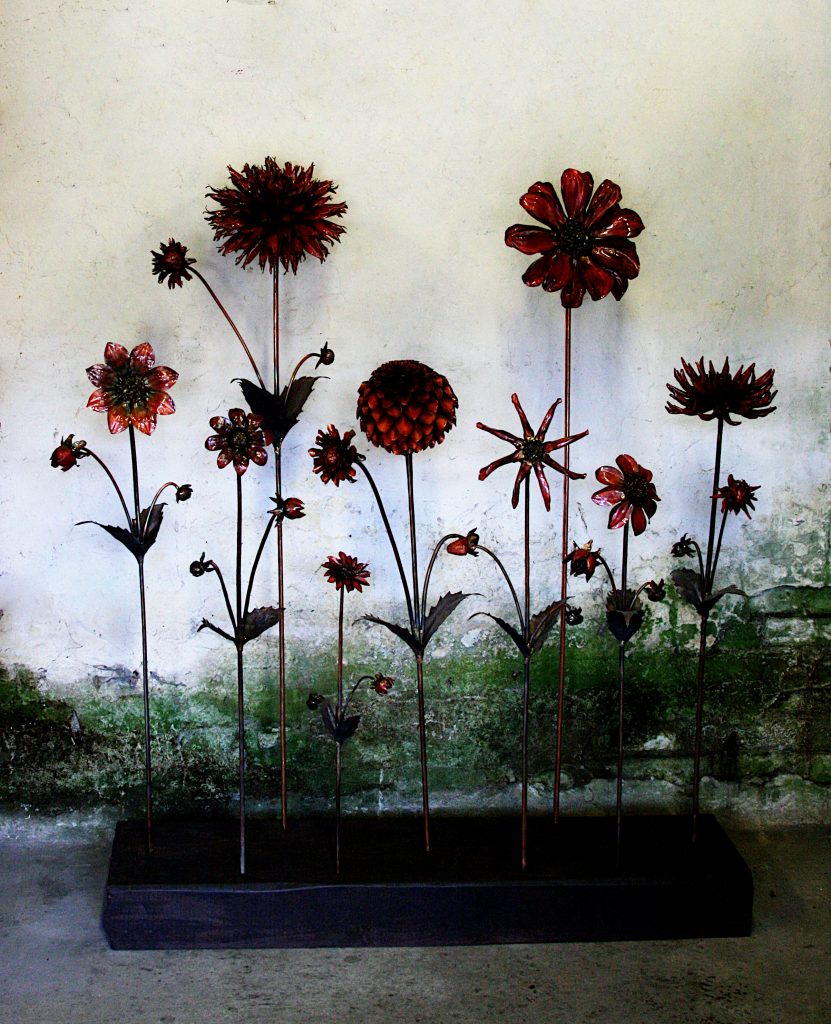
Copper is the metal which mankind first isolated and used. Working in copper, I stand in a line reaching back at least seven thousand years. It is a wonderful element: it is bendy and malleable, but can be hard and springy; it can equally happily produce fine frizzy wire, stiff spiky spines, textured membranous wings, long smooth limbs and stems or cranky twisted branches, or yet a massive solid bulk like my elephant’s forehead. And more.
I work using scrap copper sheet (mostly from old hot-water tanks), old heating pipe, and wire of different thicknesses. I use an oxy-propane torch, because the fiercer heat of oxy-acetylene melts the copper too easily. I have an anvil and beating domes, and a range of hammers and other tools for bending, beating and shaping. The copper is joined together using brazing (not soldering), and all larger pieces need steel reinforcing inside copper tubes, because copper does not have great structural strength. The rest is trade secrets.
Mostly I am self-taught, but like all craft workers I’m always on the lookout for tips and techniques I can pick up from fellow workers.
